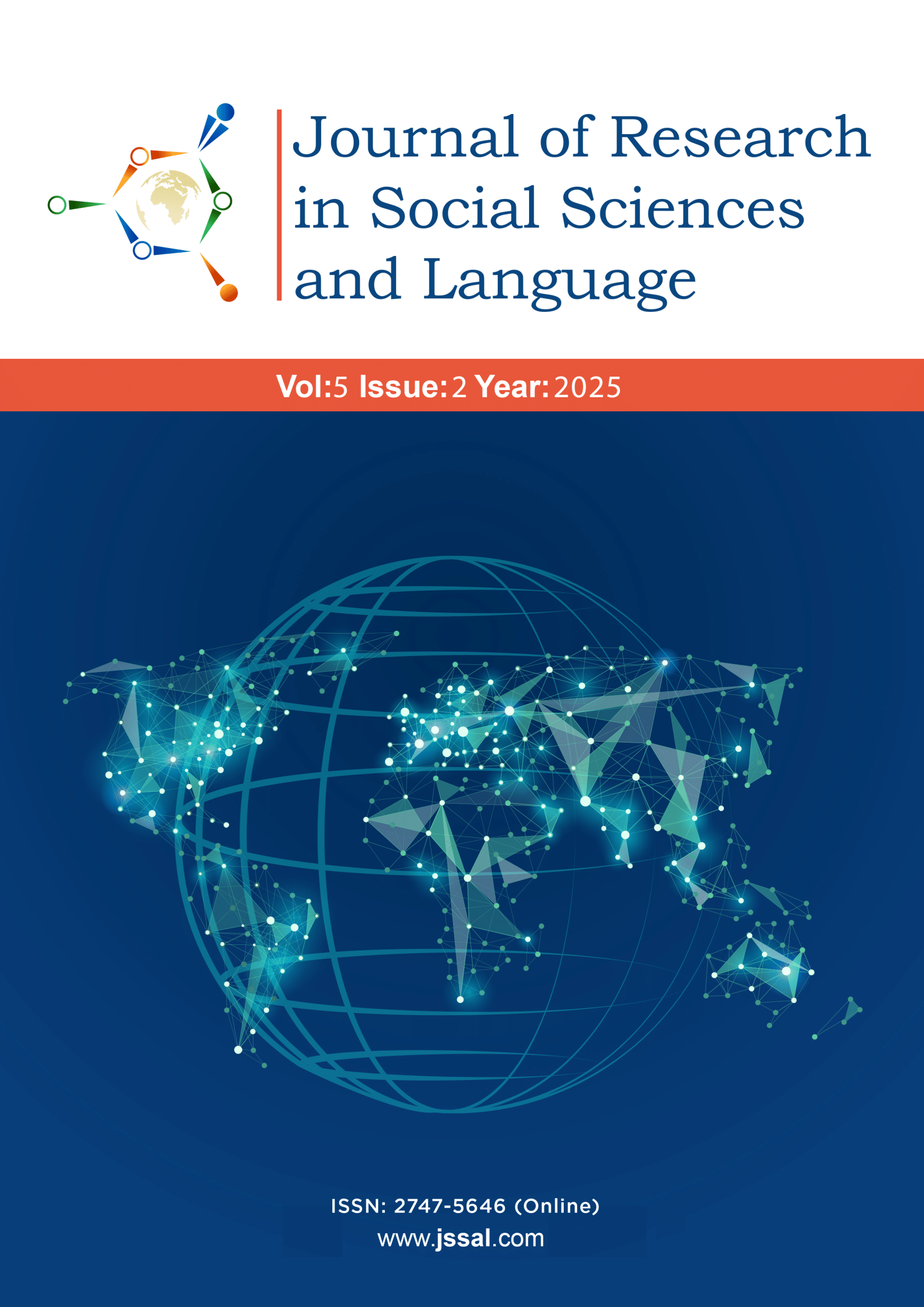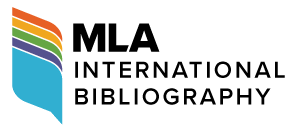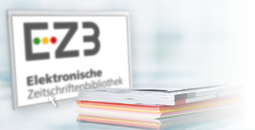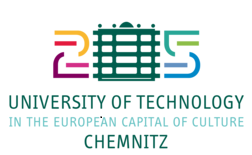"I was definitely motivated!" – Pupils' perspectives on the use of multilingualism in the classroom
DOI:
https://doi.org/10.71514/jssal/2025.187Keywords:
multilingualism, content and language integrated learning, linguistic diversity, science teaching, secondary school, students’ perspectivesAbstract
Students’ heritage languages often remain untapped as a resource for learning in mainstream classrooms. This mixed-methods study explores how secondary school students in Germany perceive and engage with multilingual practices in science education. Drawing on data from the DFG-funded project “Physics Education in the Context of Linguistic Diversity” (PhyDiv), we combine quantitative survey data (N=436) and qualitative interview data (n=9) to examine students’ attitudes, experiences, and motivations regarding heritage language use in class. Survey data indicate that, in student’s experience, the use of languages other than German is typically not permitted in class, making multilingual practices unfamiliar to most of them. Many supported a monolingual classroom policy. However, students who had been explicitly encouraged to use their heritage languages during group work expressed significantly more positive attitudes than their peers. Interview data from multilingual students who used Turkish in partner- and group work highlights that heritage language use was associated with positive emotions, increased engagement, and perceived learning support. At the same time, students’ willingness to use their heritage language was shaped by their self-perceived language proficiency and the language skills of peers. Overall, the findings emphasize the potential of multilingual pedagogies to enhance classroom inclusion and challenge monolingual norms—provided that teachers actively support students in viewing their linguistic resources as legitimate and valuable. The study concludes with implications for classroom practice and teacher education, advocating multilingual-inclusive teaching as a strategy not only for language development but also for promoting engagement, well-being, and equity.
Downloads
References
Barwell, R., Clarkson, P., Halai, A., Kazima, M., Moschkovich, J. N., Planas, N., Setati-Phakeng, M., Valero, P., & Villavicencio Ubillús, M. (Eds.). (2016). Mathematics education and language diversity: The 21st ICMI Study. Springer.
Böhmer, J.& Safouane, S. (in press): Sprachunterricht in Hamburg. Aus "Herkunftssprachenunterricht" und "Fremdsprachenunterricht" wird "Sprachunterricht". Jahrbuch des Gesamtverbands moderne Fremdsprachen.
Brandt, H. (2021). Sprachliche Heterogenität im gesellschaftswissenschaftlichen Unterricht: Herangehensweisen und Überzeugungen von Lehrkräften in der Sekundarstufe I. Interkulturelle Bildungsforschung: Vol. 25. Waxmann.
Brandt, H. (2024). Welche Sprachen sprechen unsere Schülerinnen und Schüler? Sprachenvielfalt in Hamburg. Hamburg Macht Schule, 36(2), 50. https://www.hamburg.de/resource/blob/818512/2a54ffe3ac61d821ddb99008a31f21da/hms-2-2024-data.pdf
Brandt, H., & Böhmer, J. (2024). Sprachliche Diversität im Unterricht: Potenziale nutzen, Herausforderungen meistern. Sprache Stimme Gehör, 48(04), 225–230. https://doi.org/10.1055/a-2305-2679
Brandt, H., Böhmer, J., Höttecke, D., & Gogolin, I. (2025). Teaching and learning physics in the context of linguistic diversity: Evaluating the impact of linguistically responsive teaching approaches on learning outcomes for mono- and multilingual students. European Journal of Applied Linguistics. Advance online publication. https://doi.org/10.1515/eujal-2025-0030
Brandt, H., Böhmer, J., Gogolin, I., Höttecke, D., Möller, R., & Schauer, R. (2024). Physikunterricht im Kontext sprachlicher Diversität (PhyDiv). DDS – Die Deutsche Schule, 116(2), 194–201. https://doi.org/10.31244/dds.2024.02.08
Bredthauer, S., & Engfer, H. (2018). Natürlich ist Mehrsprachigkeit toll! Aber was hat das mit meinem Unterricht zu tun? Universitäts- und Stadtbibliothek Köln. https://kups.ub.uni-koeln.de/8092/1/Manuskript_BredthauerEngfer-2.pdf
Bührig, K., & Duarte, J. (2013). Zur Rolle lebensweltlicher Mehrsprachigkeit für das Lernen im Fachunterricht – ein Beispiel aus einer Videostudie der Sekundarstufe II. Gruppendynamik Und Organisationsberatung, 44(3), 245–275.
Cook-Sather, A. (2006). Sound, Presence, and Power: “Student Voice” in Educational Research and Reform. Curriculum Inquiry, 36(4), 359–390. https://doi.org/10.1111/j.1467-873X.2006.00363.x
Cummins, J. (2001). Negotiating identities: Education for empowerment in a diverse society (2nd ed.). California Association for Bilingual Education (CABE).
Dewitz, N. von, Mahhs, I.‑M., & Wamhoff, D. (2022). Die eigene Mehrsprachigkeit im Blick – Perspektiven migrationsbedingt mehrsprachiger Schüler*innen. Leseräume. Zeitschrift Für Literalität in Schule Und Forschung, 9(8), 1–18.
Dirim, İ. (1998). „Var mı lan Marmelade?: Türkisch-deutscher Sprachkontakt in einer Grundschulklasse. Interkulturelle Bildungsforschung: Bd. 3. Waxmann.
Duarte, J. (2016). Translanguaging in mainstream education: A sociocultural approach. International Journal of Bilingual Education and Bilingualism, 3(36), 150–164.
FHH - Behörde für Schule und Berufsbildung (Ed.). (2022). Bildungsplan Grundschule, Stadtteilschule, Gymnasium: Allgemeiner Teil [Bildung und Erziehung an Hamburgs Schulen]. https://www.hamburg.de/contentblob/16762978/f4ec5d1f1348e96f16dc22d676c53ea2/data/a-teil-dl.pdf
FHH - Behörde für Schule und Berufsbildung (Ed.). (2025). Das Schuljahr in Zahlen 2024/2025: Das Hamburger Schulwesen. https://ifbq.hamburg.de/wp-content/uploads/sites/803/2025/02/Gesamtdokument-SchuljahrInZahlen_2024-25.pdf
García, O., & Wei, L. (2014). Translanguaging: Language, Bilingualism and Education. Palgrave Macmillan.
Göbel, K., Schmelter, L., Neuber, K., & Struck, L. (2024). Appreciation of multilingual teaching activities by secondary school students in Germany: findings from a quasi-experimental intervention study on teaching French. Journal of Multilingual and Multicultural Development, 1–22. https://doi.org/10.1080/01434632.2024.2355273
Gogolin, I. (2008). Der monolinguale Habitus der multilingualen Schule. Internationale Hochschulschriften: Vol. 101. Waxmann. https://directory.doabooks.org/handle/20.500.12854/74485
Grosjean, F. (2020). Individuelle Zwei- und Mehrsprachigkeit. In I. Gogolin, A. Hansen, S. McMonagle, & D. Rauch (Eds.), Handbuch Mehrsprachigkeit und Bildung (pp. 13–21). Springer VS.
Ilić, V. (2016). Familiale Lernumwelt von Jugendlichen mit und ohne Migrationshintergrund. Budrich UniPress.
Haukås, Å., Storto, A., & Tiurikova, I. (2022). School students’ beliefs about the benefits of multilingualism. Journal of Multilingual and Multicultural Development, 45(7), 2817–2830. https://doi.org/10.1080/01434632.2022.2075001
Krumm, H.‑J. (Ed.). (2001). Kinder und ihre Sprachen - lebendige Mehrsprachigkeit: Sprachenporträts. Eviva.
Kultusministerkonferenz (Ed.). (2017). Interkulturelle Bildung und Erziehung in der Schule (Beschluss der Kultusministerkonferenz vom 25.10.1996 i. d. F. vom 05.12.2013): Berichte der Länder über die Umsetzung des Beschlusses. https://tinyurl.com/rburrza
Lange, S. D., Alhallak, Z., & Plohmer, A. (2024). „Sie dürfen sich nicht auf ihrer Muttersprache unterhalten und das finde ich tatsächlich auch gut“ – Sprachbezogene Diskriminierung in der Grundschule. Zeitschrift Für Grundschulforschung, 17(2), 247–262. https://doi.org/10.1007/s42278-024-00212-6
Lange, S. D., & Polat, S. (2024). Scoping review on primary school teachers’ beliefs on multilingualism in classroom teaching. International Journal of Multilingualism, 1–20. https://doi.org/10.1080/14790718.2024.2383739
Lundberg, A., & Brandt, H. (2023). Teachers’ beliefs about multilingualism: novel findings and methodological advancements: introduction to special issue. International Journal of Multilingualism, 20(1), 1–10. https://doi.org/10.1080/14790718.2022.2160726
Mayring, P. (2022). Qualitative Inhaltsanalyse: Grundlagen und Techniken (13th ed.). Beltz.
Polat, S., & Lange, S. D. (2025). Systematic review on pre‐service and in‐service primary school teachers’ beliefs on multilingualism: A qualitative thematic review and a quantitative meta‐analysis. Review of Education, 13(1), Article e70046. https://doi.org/10.1002/rev3.70046
Putjata, G., & Plöger, S. (2021). Perspektiven von Kindern und Jugendlichen auf sprachliche Diversität und Sprachbildungsprozesse. Editorial. Diskurs Kindheits- Und Jugendforschung, 16(4).
Redder, A., Uribe, Á., Wagner, J., & Krause, A. (2022). Regelunterricht mit „unbearbeiteten Ressourcen“ mehrsprachigen Handelns. In J. Wagner, A. Krause, Á. Uribe, S. Prediger, & A. Redder (Eds.), Mehrsprachiges Mathematiklernen: Von sprachhomogenen Kleingruppen zum Regelunterricht in sprachlich heterogenen Klassen (pp. 153–194). Waxmann.
Reitenbach, V., Decristan, J., Rauch, D., Bertram, V., & Schneider, K. M. (2023). Selbstberichtete Gründe für die (Nicht‑)Nutzung von Familiensprachen beim mehrsprachigkeitssensiblen Reziproken Lehren. Unterrichtswissenschaft, 51(2), 221–243. https://doi.org/10.1007/s42010-023-00171-4
Schastak, M., Reitenbach, V., Rauch, D., & Decristan, J. (2017). Türkisch-deutsch bilinguale Interaktion beim Peer-Learning in der Grundschule: Selbstberichtete Gründe für die Annahme oder Ablehnung bilingualer Interaktionsangebote. Zeitschrift Für Erziehungswissenschaft, 20(2), 213–235. https://doi.org/10.1007/s11618-017-0735-5
Statistisches Bundesamt (Ed.). (2023). Mikrozensus - Bevölkerung nach Migrationshintergrund: Erstergebnisse 2022. https://www.destatis.de/DE/Themen/
Gesellschaft-Umwelt/Bevoelkerung/Migration-Integration/Publikationen/
Downloads-Migration/statistischer-bericht-migrationshintergrund-erst-2010220227005.xlsx?__blob=publicationFile&v=4
Strobel, B., & Kristen, C. (2015). Erhalt der Herkunftssprache? Muster des Sprachgebrauchs in Migrantenfamilien. Zeitschrift Für Erziehungswissenschaft, 18(1), 125–142.
Ünsal, Z., Jakobson, B., Molander, B.‑O., & Wickman, P.‑O. (2018). Language use in a multilingual class: a study of the relation between bilingual students’ languages and their meaning-making in science. Research in Science Education, 48(5), 1027–1048.
Van Gorp, K., & Verheyen, S. (2024). Primary school children’s conflicted emotions about using their heritage languages in multilingual classroom tasks. The Modern Language Journal, 108(S1), 101–126. https://doi.org/10.1111/modl.12893
Wamhoff, D., Mahhs, I.‑M., & Dewitz, N. von (2022). „Wichtiger find‘ ich jetzt nicht, aber manche sind halt einfach nützlicher“ – Sprachliche Hierarchisierungen aus Sicht mehrsprachig aufgewachsener Schüler*innen. Zeitschrift Für Interkulturellen Fremdsprachenunterricht, 27(1), 345–368.
Downloads
Published
How to Cite
Issue
Section
License
Copyright (c) 2025 Hanne Brandt, Rebecca Möller, Jule Böhmer

This work is licensed under a Creative Commons Attribution 4.0 International License.
The work is made available under the terms of the Public Offer and the Creative Commons Attribution 4.0 International License (CC BY 4.0). This license allows anyone to reproduce, distribute, and adapt the material in any medium or format, including for commercial purposes, provided that proper credit is given to the creator(s) and the original source.












